The trap bar deadlift is a great exercise that has lots of things going for it. The trap bar makes the deadlift much more beginner friendly and reduces the risk of a lower back injury. On other hand, the trap bar deadlift does not use as many muscles as the straight bar deadlift. In this guide, we will discuss all of the trap bar deadlift pros and cons and break down who should and should not do the exercise.
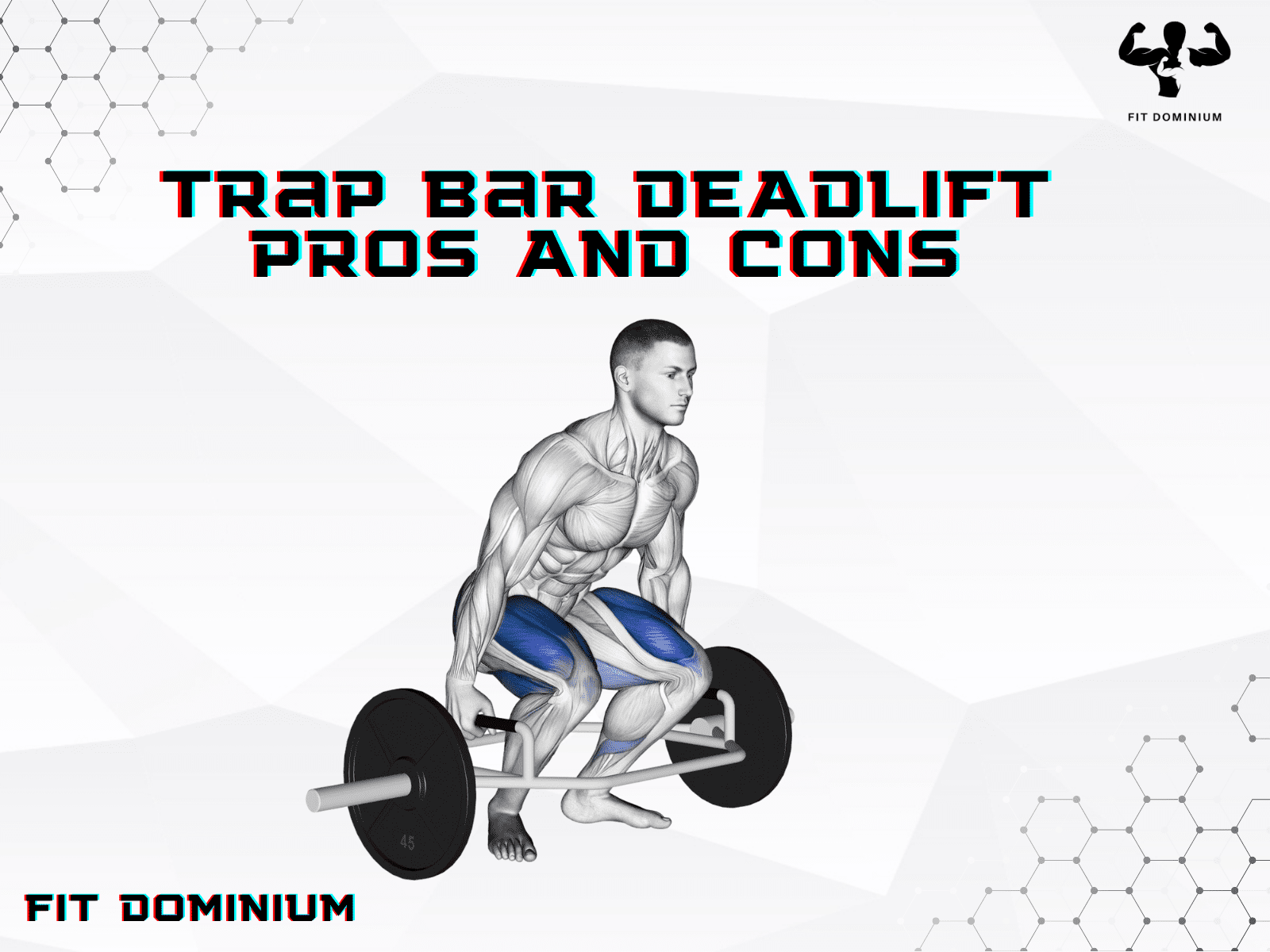
Table of contents
Trap Bar Deadlifts: Pros
There are lots of reasons why trap bar deadlifts have gotten so popular over the past few years. You should read over these benefits and decide if the trap bar deadlift is right for you:
Easier On Your Lower Back
In terms of trap bar deadlift benefits, the primary one is injury prevention for your lower back, When you are doing a deadlift with a hex bar, the weights are situated directly at your sides as opposed to in front of you during barbell deadlifts. This means that the trap bar allows the weight to be more in line with your own center of gravity.
In practice, this means that there will be less sheer force on your lumbar spine when you are moving the weight. Also, trap bars tend to offer a higher starting position so you do not have to bend down as much.
I am a large proponent of the straight bar deadlift but will be the first to admit that lower back injuries are common especially if proper form is not used. The trap bar relieves some of the risks by putting you in a much safer position.
No More Bicep Tears
When you are doing a barbell deadlift, you can either take an overhand grip or a mixed grip.
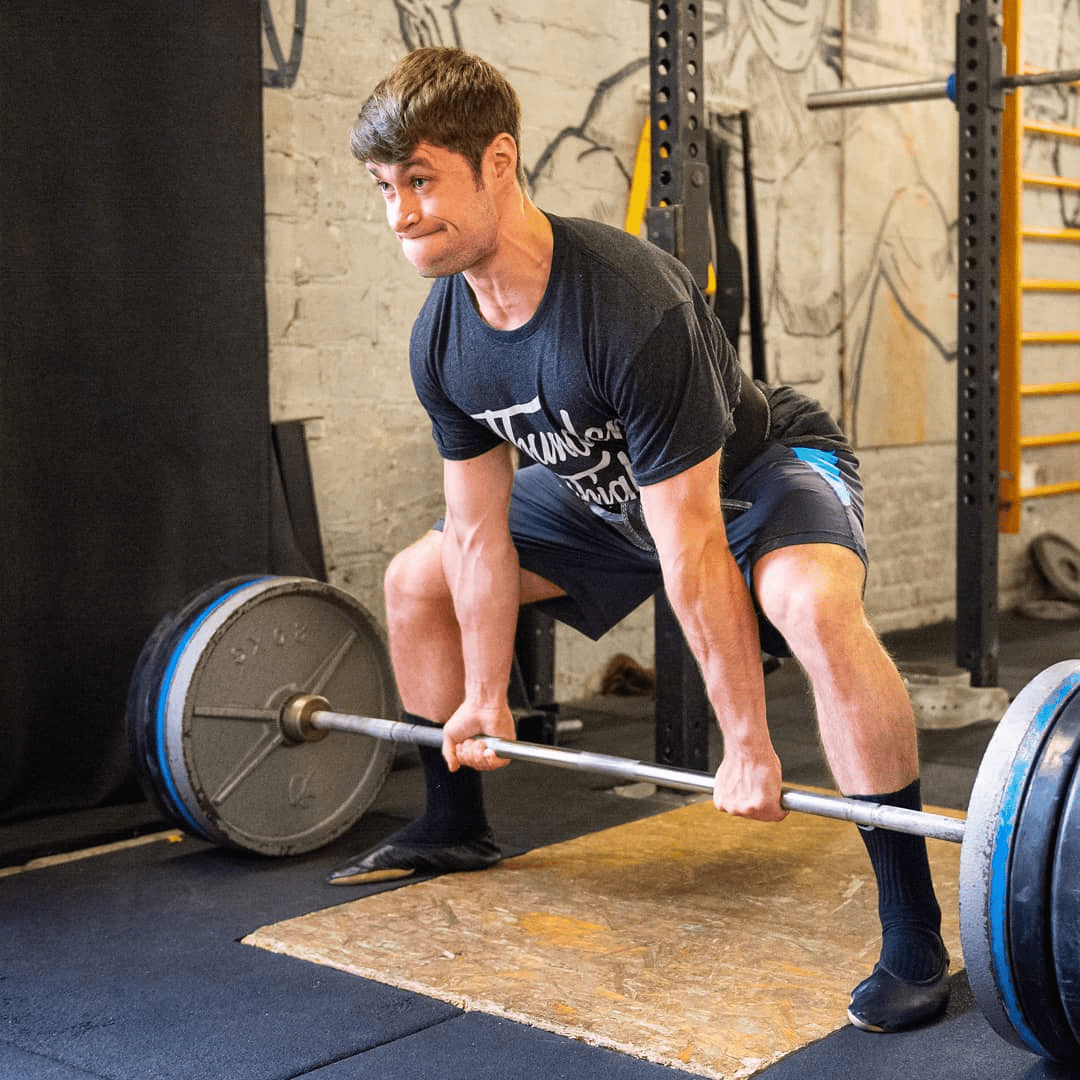
The overhand grip is fairly safe for your biceps. The problem is that the overhand grip often becomes the weakest link in someone’s deadlift. Meaning that their grip strength caps their deadlift.
Advanced lifters find that a mixed grip allows them to lift more weight. However, if you use a mixed grip, you are putting your bicep in a very vulnerable position. Bicep tears are not uncommon using this grip and should be a cause for concern.
There is no need to use a mixed grip with a trap bar. In a neutral position, your biceps are much safer.
Less Technique To Learn
If you are a serious lifter, you will know that lifting is NOT as easy as it looks. To master a lift you need to spend time learning the movement power and acquiring the needed mobility.
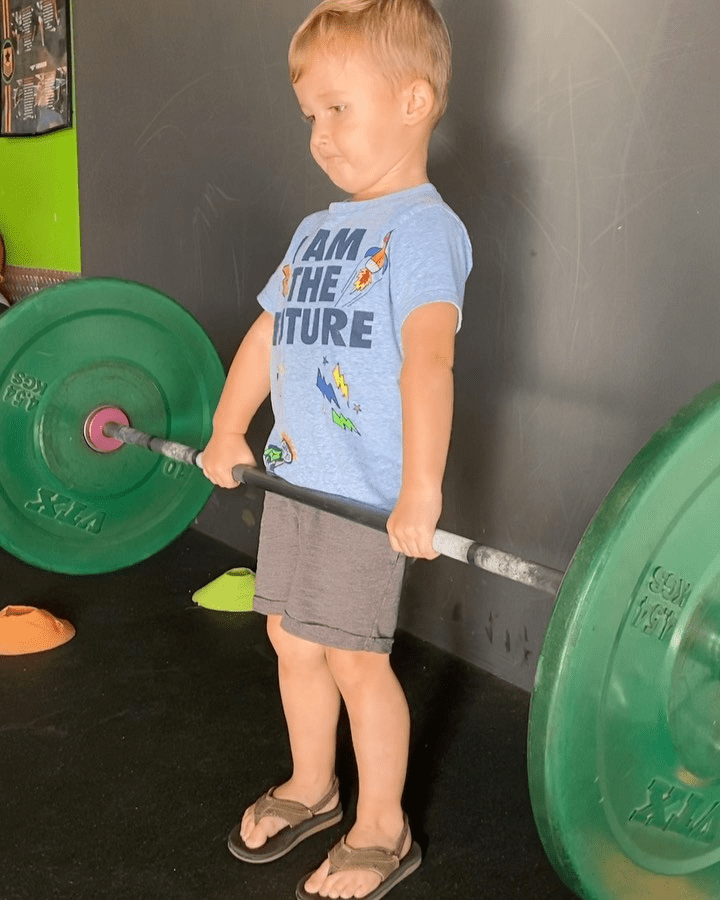
And while the same could be said for a trap bar, it is much easier to learn. You do not really need a whole lot of mobility to technique.
For the most part, you can really just get inside it and lift it up. This makes it a great choice for beginners or anyone who does not want to worry too much about their form.
You Can Lift More Weight
Due to the weight being at your sides during a hex bar deadlift, you will find that you easily lift more weight than you with a regular bar.

Simply put, trap bars allow you to put more total weight on your muscles. This can lead to more muscle growth and stimulus.
Furthermore, the gains you see on trap bar lifts will almost certainly translate to your other lifts as well. I know for a fact that when my trap bar deadlift goes up, my conventional deadlift and squat have gone up as well.
Build Explosivity
There is a reason that hex bars are used a lot by professional sports teams and that is because they build explosiveness and power like nothing else.
A study conducted at Robert Gordon University concluded that the use of a trap bar resulted in significantly greater peak force, velocity, and power during deadlifts compared to a regular straight bar.
Carryover To Deadlift And Squat
The other great thing about trap bar deadlifts is that they provide direct carryover to both the squat and plateau. Since the trap bar deadlift is similar to a blend of both movements, it can help you break through plateaus on both exercises.
Trap Bar Deadlifts: Cons
While the trap bar deadlift has lots of upsides, there are some cons you should first consider to get the full picture. As with any lift, there are limitations and reasons why you may not want to do it:
Less Emphasis On Hips and Lower Back
The first one is that the trap bar does not have as much stimulus provided to your hips and overall lower back musculature.

In essence, while there are a straight bar and regular bar deadlifts, work many of the same muscles as the trap bar. There are some key differences in terms of the muscles that are worked.
Many people, including myself, described the trap bar deadlift as incredibly similar to a squat. The majority of the load during a trap bar deadlift is actually placed on your legs, especially your hamstrings, quads, and glutes.
Now, this is a lot different from a straight bar deadlift, where a lot more load is placed on the back and lower back especially. So if you’re somebody that’s trying to target that area for one reason or another it’s something to take into consideration.
Less Stability
Secondly, the trap bar is just less stable. If you think about it from a simple point of view, the trap bar is a lot larger in terms of its footprint due to its hexagonal shape.
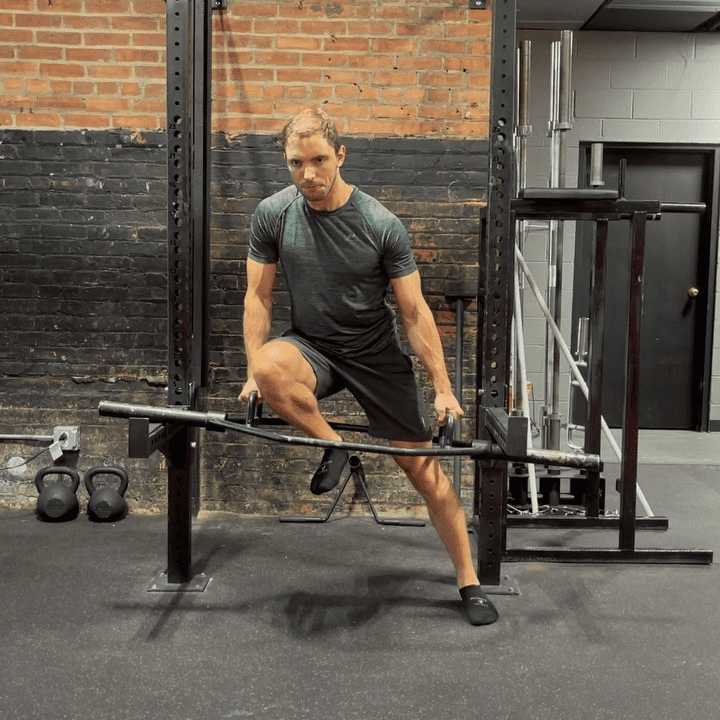
It’s a lot harder to balance a bar that big way especially when you have weight on it.
When you first do a trap bar deadlift, it may seem incredibly easy to lift the weight up and it may seem all-natural once you go to the top of the lock opposition, you will notice that the bar may sway a little bit.
This is because the space within the bar itself that allows you to stand in it means that there is no place for the bar to rest. It is up to you to stabilize the bar completely.
In comparison with a straight bar when you do a deadlift, the bar rests against your thighs, and everything feels nice, tight, and stable.
So those that have balanced issues or are perhaps not looking for this type of stimulus may be may prefer the straight bar deadlift as a whole.
Less Variation
The thing about the trap bar is that it has a set frame and grips. This means that there is way less potential for variation and customization. With a regular barbell, you can go as narrow or wide in your grip and stance as you want.
Aside from less exercise variation, it also means that the bar may not fit people of all body types. People that are large or taller, may have trouble fitting inside the frame of the trap bar.
Are Trap Bar Deadlifts Good For You?
After taking into account all of these pros and cons of trap bar deadlifts, it is clear that this lift has a lot to offer but is not for everyone. As a general guideline, I would follow these basic recommendations:
Do Trap Bar Deadlifts If
You have had a previous lower back injury
Your grip is the weakest part of your deadlift
You have plateaued on your regular deadlift
You want to focus more on your quads/legs
You are a beginner
Do Not Do Trap Bar Deadlifts If
You want to focus on your lower back strength
You are a taller/large lifter
You want an exercise that isolates your legs or back
What Muscles Does The Trap Bar Deadlift Work?
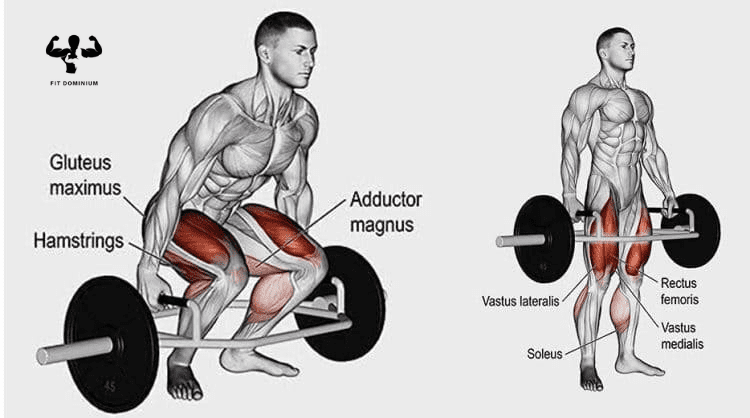
Here are all the muscles worked by the trap bar deadlift:
1. Quadriceps
Compared to the traditional barbell deadlift, your quadriceps are going to be more heavily engaged. Your quads have to work hard to extend your legs as you pull the bar up. For this reason, many people say that the trap bar deadlift is more leg focused than the conventional deadlift. Out of all the hex bar deadlift muscles worked, your quads are going to be doing the most work.
2. Hamstrings
Your hamstrings are still going to be heavily taxed during a trap bar deadlift, just not as much as they would be by straight bar deadlifts. The hamstrings will most be called up during the eccentric portion of trap bar deadlifts to slow the bar on the way down.
3. Lower Back Muscles
The main muscles in your lower back work deadlifts are the spinal erectors or erector spinae. Similar to the hamstrings and the other muscles in the posterior chain, the trap bar deadlift put less strain on these muscles compared to the traditional barbell deadlift. Studies have found that compared to the traditional deadlift, the trap bar deadlift places have about 50% less posterior chain activation. The rest of the load is mainly being passed on to the quads.
For people that are already doing movements that heavily tax their lower back like barbell rows or squats, the reduced lower back strain that comes with the hex bar deadlift is a positive.
4. Glutes
The glutes are the largest muscles in your body and will be heavily worked to drive your hips forward during a trap bar deadlift. However, it is the same story as the hamstrings and lower back. You can expect strength and muscle gain in your glutes but not to the same extent as barbell deadlifts.
5. Lats
Your lats or latissimius dorsi will have to work set your back and help pull bar up during the trap bar deadlift.
6. Traps
Your traps or trapezius or more heavily taxed during a trap bar deadlift. Thanks to the neutral grip, your traps will feel more engaged at the lockout position.
7. Gripping Muscles
There are lots of muscles that make up your strength in your forearm including the flexor digitorum profundis and flexor pollicis longus. However, thanks to the neutral grip of the trap bar, you will likely be able to handle more weight than you could with a regular barbell. Therefore, you are overloading these muscles more.
Trap Bar Deadlift vs. Barbell Deadlift Muscles Worked
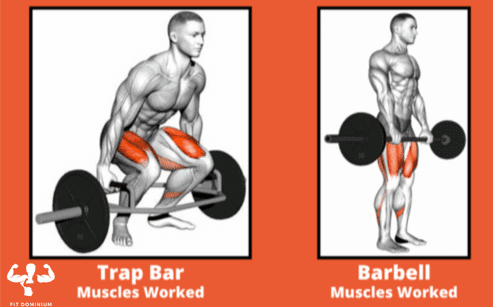
While people commonly debate and obsess over the minor differences between the trap bar and conventional barbell deadlifts. the reality is that both work the same muscles. As long as you train either one with dedication and get stronger, you can expect to make serious gains in your quads and posterior chain.
At the end of the day, it is up to you to decide which fits your training better.
Other Trap Bar Deadlift Variations
There are tons of other useful variations that you can incorporate into your trap bar deadlift work. Here are some of our favorites:
Trap Bar Romanian Deadlift

Trap bar RDLs are a great way to strengthen your posterior chain. In comparison to the straight bar RDL, you will be able to move more weight while lowering your risk of a lower back injury.
Trap Bar Deadlift Jumps
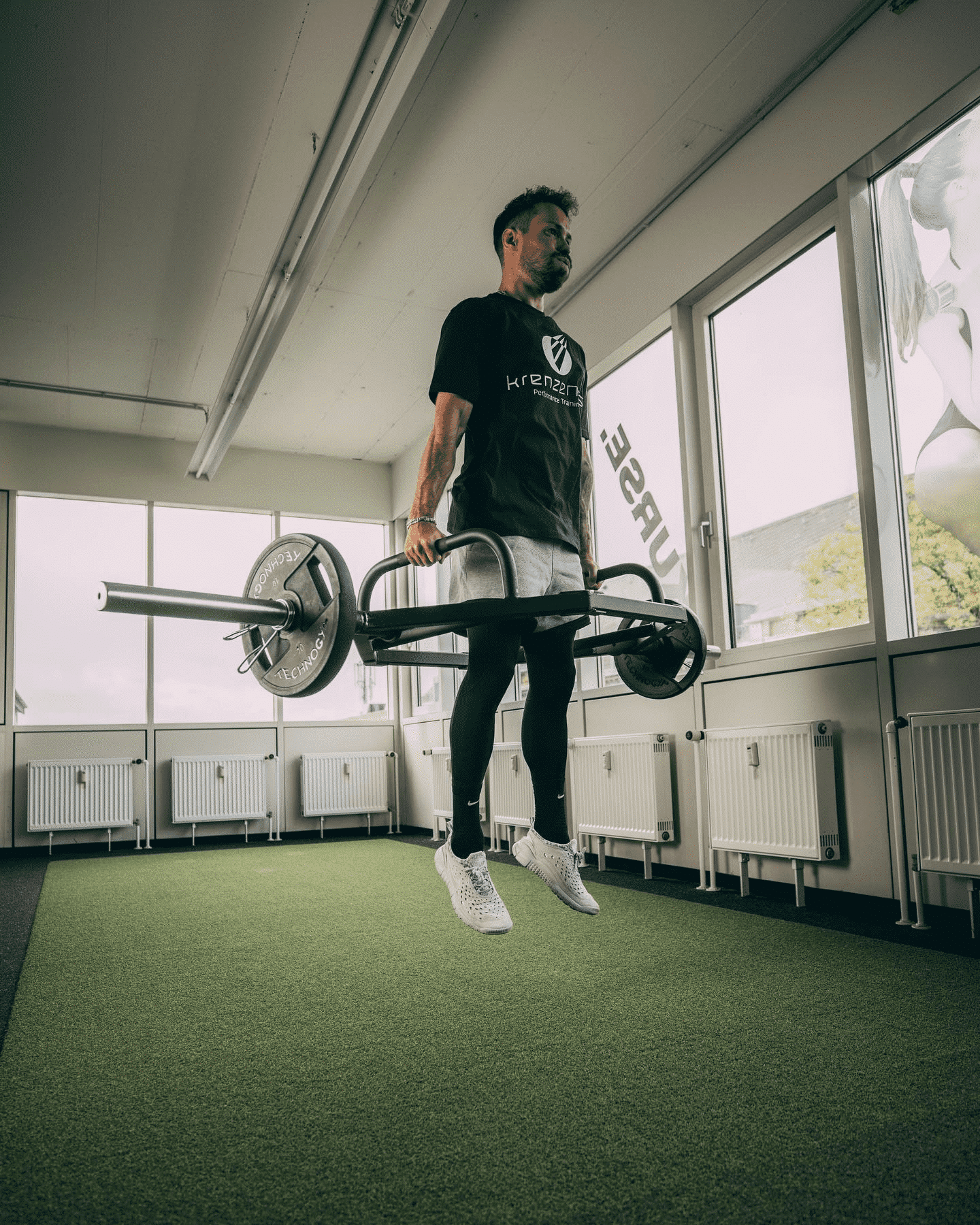
Sometimes simply referred to as trap bar jumps, this variation is basically just a deadlift followed by a jump at the top of the rep. These are very popular for athletes as they can help you build serious explosive power and do not require much technique.
Deficit Trap Bar Deadlift
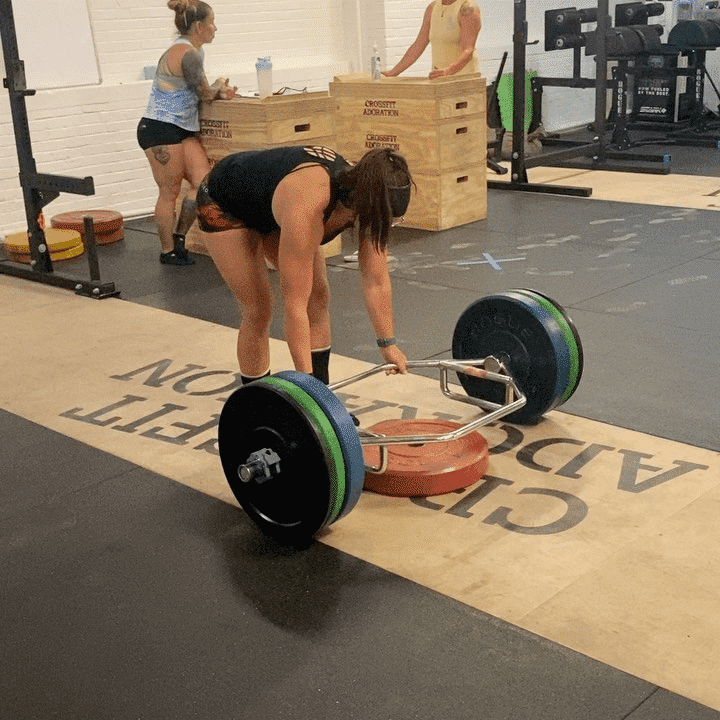
The deficit trap bar deadlift can be very useful if you are trying to increase the range of motion or working on your explosiveness from the floor. This version of deadlift variation is done by standing on a platform to make the lift harder.
Final Thoughts
Trap bar deadlifts are a great exercise that you should consider adding to your training. The exercise, like any, has some limitations. But for the majority of people, it is an exercise that can revamp their training and help them with other movements as well.

Find The Best Trap Bar
After years of testing, we assembled a master list with the best trap bars for every home gym owner


